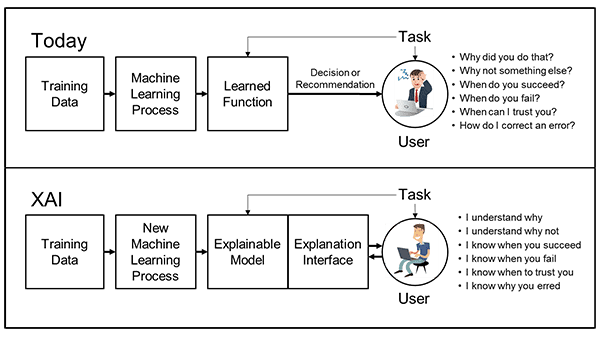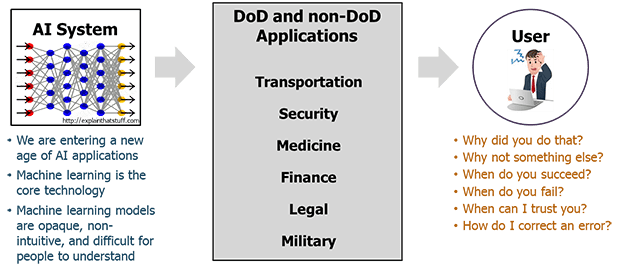This article was written by Dr. Matt Turek.
Dramatic success in machine learning has led to a torrent of Artificial Intelligence (AI) applications. Continued advances promise to produce autonomous systems that will perceive, learn, decide, and act on their own. However, the effectiveness of these systems is limited by the machine’s current inability to explain their decisions and actions to human users (Figure 1). The Department of Defense (DoD) is facing challenges that demand more intelligent, autonomous, and symbiotic systems. Explainable AI—especially explainable machine learning—will be essential if future warfighters are to understand, appropriately trust, and effectively manage an emerging generation of artificially intelligent machine partners.
The Explainable AI (XAI) program aims to create a suite of machine learning techniques that:
- Produce more explainable models, while maintaining a high level of learning performance (prediction accuracy); and
- Enable human users to understand, appropriately trust, and effectively manage the emerging generation of artificially intelligent partners.
New machine-learning systems will have the ability to explain their rationale, characterize their strengths and weaknesses, and convey an understanding of how they will behave in the future. The strategy for achieving that goal is to develop new or modified machine-learning techniques that will produce more explainable models. These models will be combined with state-of-the-art human-computer interface techniques capable of translating models into understandable and useful explanation dialogues for the end user (Figure 2). Our strategy is to pursue a variety of techniques in order to generate a portfolio of methods that will provide future developers with a range of design options covering the performance-versus-explainability trade space.

Figure 2. XAI Concept
To read the whole article, with each point all explained and illustrated, click here.

